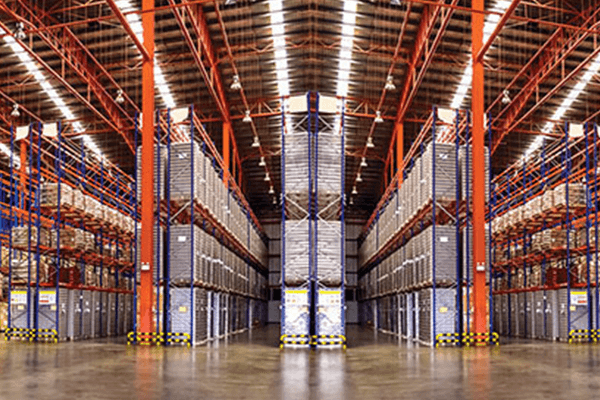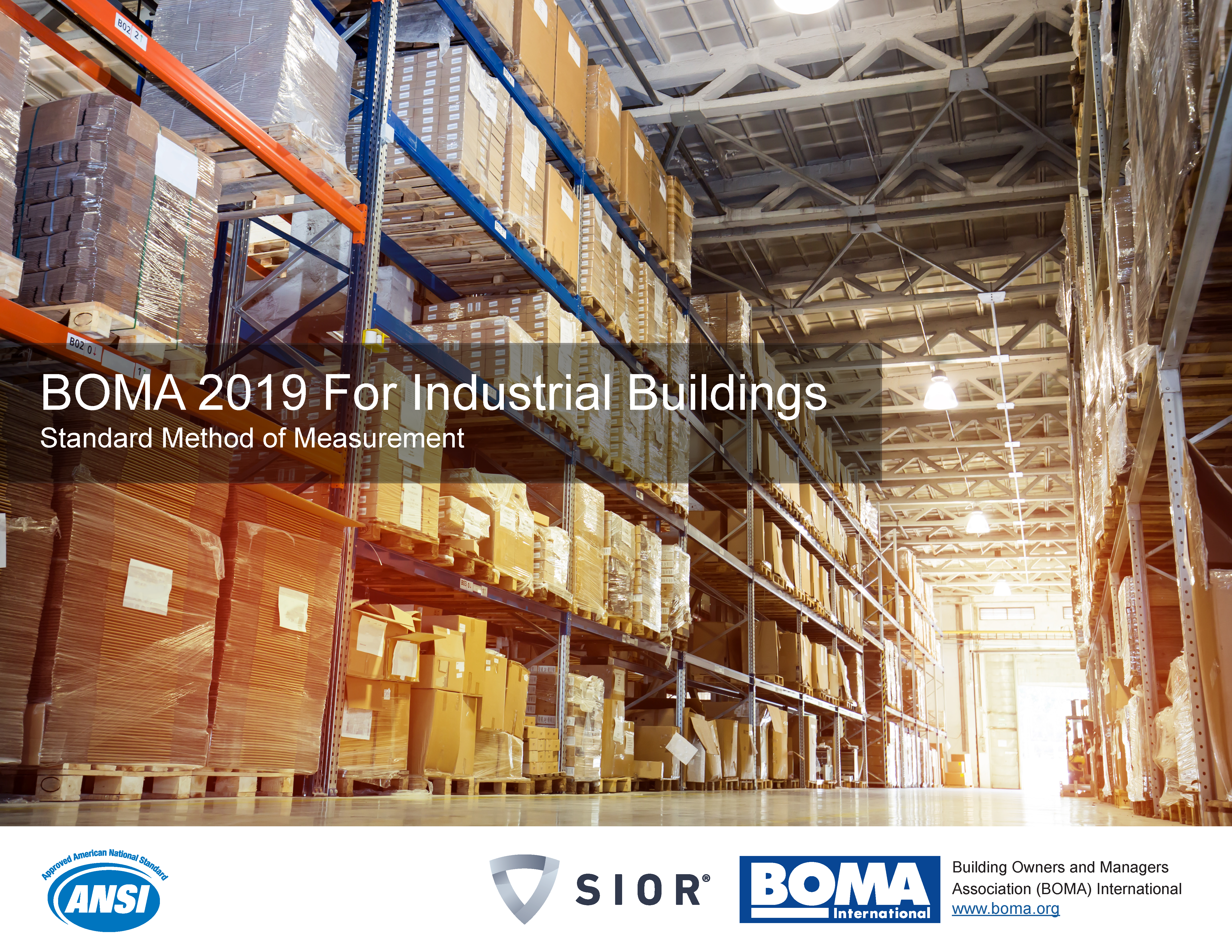
The U.S. industrial market entered 2020 with 11 consecutive years of growth. The question was how long this expansion could continue. At the end of February, robust activity from third-party logistics (3PLs) and e-commerce, as well as wholesale companies still in expansion mode, made an impending downturn difficult to imagine. Industrial real estate professionals joked that the only thing that could stop the sector in the United States was a massive external crisis like nuclear war—or a global pandemic.
That joke stopped being even a little bit funny in March when the COVID-19 pandemic led to an economic shutdown across the United States. The streak of 40 consecutive quarters of positive net absorption seemed in danger of ending.
INDUSTRIAL'S UNIQUE IMMUNITY
As cities across the United States moved to close businesses and issue stay-at-home orders, the country’s economic future looked grim—and that seemed to include industrial real estate. By April, industrial transactions, such as new leases, user sales and renewals, plummeted 29 percent compared with the previous month. Much of the downturn affected smaller properties—25,000 square feet (sf) and under, a size range with higher risk because most of the occupants were small businesses reliant on the local economy. Activity in this size range dropped 57 percent compared with the previous month. However, bulk transactions only dropped 5 percent, a sign of good things to come.
In May, the industrial market completely turned around. Transactional activity increased 43 percent compared to the previous month and remained on par in June. This led to the 41st consecutive quarter of positive absorption in Q2, with asking rents increasing 6 percent compared to the previous year to a record high $7.96 per square foot per year for all product types. Indeed, the global pandemic did not stop industrial real estate.
The question is why, and the answer is the same as the past five years. Consumers are buying more product online and expecting that product to be delivered in a timely manner. Since long before the pandemic, this has been shifting supply chain strategy to increase distribution centers throughout the country. When the pandemic hit, stores closed and many people avoided the ones that remained open. COVID-19 introduced a new consumer base to the world of online shopping and ensured current customers would continue to buy online. To keep up with demand, retailers, wholesalers and 3PLs are leasing a massive amount of space.
A BOOM TIME FOR INDUSTRIAL
At the end of July, bulk transactions for the year rose to 255 million square feet (msf), a whopping 23 percent higher than this time last year. Adding to that, 314 msf is currently under construction (only 1.7 msf lower than the all-time record), and 37 percent is pre-leased—the most in a year. Transactional activity and increased touring throughout the country make it nearly certain net absorption will remain positive in Q3 and throughout the economic downturn.
Positive fundamentals during one of the sharpest economic declines in U.S. history show the difference in industrial real estate so far this quarter and what it was in 2008. In 2008, industrial real estate was used to store and distribute products to brick-and-mortar locations; they were cost centers for business and they weren’t used as a competitive advantage for direct sales, at least not as much as today.
The industrial market entered the Great Recession with a vacancy rate of 7.4 percent, with weak preleasing of a plethora of under-construction product. Vacancy rates rose quickly to 300 basis points, leading to an oversupply that lasted four years. In contrast, today’s distribution centers are not just cost centers, they are integral to a company’s survival. Retailers and wholesalers that increased distribution capabilities either directly or through 3PLs—the largest occupier of industrial real estate in the country—weathered the COVID storm, while other companies did not.
WHAT'S NEXT
The long-term forecast for industrial real estate is bullish. The primary reason for the long-term outlook is e-commerce and the further supply chain optimization needed. CBRE Research uses a formula based on historical data that shows for every billion dollars in e-commerce sales, an additional 1.25 msf of industrial product is needed, meaning more than two billion square feet of additional product will be needed the next decade to quench demand.
While demand will be across the geographic spectrum, the regions that will benefit the most are the Southwest and Southeast United States. These regions are projected to have the highest rate of population growth over the next five years.
BOMA'S LATEST INDUSTRIAL STANDARD
The booming industrial sector is becoming more complex every year, and these nuances are reflected in BOMA International’s latest update to its industrial floor measurement standard. For more than 100 years, BOMA International’s measurement standards have supported the commercial real estate industry by promoting clear and transparent communication among all participants in real estate transactions, providing consistent calculations of rentable square footage and allowing accurate comparisons through a clearly understood method of measurement.

BOMA 2019 for Industrial Buildings: Standard Method of Measurement (ANSI/BOMA Z65.2—2019), produced in partnership with SIOR, was revised to be more user-friendly and address frequently asked questions from the previous 2012 version of the standard. The updated standard includes: a unified methodology; Single Occupant and Multi-Occupant scenarios in one chart; inter-building areas fully implemented; Capped Load Factor applied to individual occupants; an easy-to-follow, step-by-step layout written in simplified language with helpful hints and detailed instructions; and compatibility with the International Property Measurement Standard for Industrial Buildings.
Offered in both print and digital formats, BOMA’s new industrial standard is available for purchase through store.boma.org.
The Inland Empire will remain the dominant market in the Southwest because of what’s known as "The Three Ls" (land, labor and location). Its close proximity to the two largest ports in the country, a large labor pool and ample land in the eastern portion of the market will keep bulk development and activity churning for the foreseeable future. But, it’s not the only market that will prosper. Phoenix, Las Vegas, Denver, Salt Lake City and Reno, Nevada, already are posting record-breaking activity and development because of their growing populations and affordable rents and this will continue going forward.
The Southeast, including Texas, also is going through a population boom. What is really driving demand, however, are investments in modernizing logistics hubs. Seaports in Charleston, South Carolina; Savannah, Georgia; and parts of Virginia, as well as new or expanded inland ports, are driving occupiers into the region. A majority of the markets also have "The Three Ls," so look for demand to remain strong for the foreseeable future.
Other trends in e-commerce will create demand subsets. Occupiers will increase their footprints to store "safety stock," increasing inventories from 15 days to 30-60 days to avoid the disruptions to supply this past year. Warehousing of this safety stock will be accomplished in a variety of factors, including larger warehouses, utilizing 3PLs and keeping more product in retail locations. This omni-channel approach also will be used to process online returns; as more people buy online, there also is an increase in "reverse logistics," in which the goods move from the end-user back to the seller or manufacturer. These trends have already begun, with average transaction sizes of bulk deals ascending to 281,000 sf at the end of July, the highest average on record. Higher inventories and more returns could lead to an additional 400 to 500 msf of industrial demand in the next decade.
EVOLVING INDUSTRIAL DESIGN
As demand for industrial shifts more towards e-commerce fulfillment, building designs will evolve. The biggest change of the building of the future will be size: Clear heights will average 40 feet, but in many cases will get higher, as more buildings are built with multiple internal floors. These are not multistory buildings with docks on each floor, but, rather, buildings with multiple floors of usable space for storage and distributing internally. This new building design will change the way square feet is measured. An example of this would be a building with a ground-floor footprint of 600,000 to 800,000 sf; when adding up the usable space of each floor, these facilities are actually close to three msf. Going forward, these buildings’ rents and sales prices will be calculated taking that into account.
Another big change in industrial real estate design will be to account for the increased use of technology. The most important factor in all of this is power. Having reliant, redundant and, in some cases, renewable power sources will be a key factor in building selection. This power will be used for automation machinery and robotics, as well as other order-picking technology. Heating, ventilating and air-conditioning (HVAC) systems in warehouses also will be more prevalent, not only for employee comfort, but to keep machineries at an ideal operating temperature.
Regional distribution hubs will grow and change, but a top concern will be servicing the final mile. Many population centers are in infill markets with little land to develop. An omni-channel approach also will be utilized similar to safety stock and online returns. This approach could be to utilize existing retail stores for pick up and delivery, something many big box retailers are already implementing. Some will utilize 3PLs, especially those with a presence in highly populated areas for final delivery, and some will look for warehouse space to service their consumer base.
With very low vacancy rates, developers will get creative to build new facilities in these markets. One of the methods utilized will be the conversion of retail stores into industrial. Today, CBRE Research is tracking 59 existing or planned conversions throughout this country. While there are zoning and construction cost headwinds to this kind of development, the changes in consumer behavior will warrant more of these conversions in the coming years.
A GLOBAL APPROACH
The source of product will diversify to avoid the disruptions that occurred because of COVID-19. Many companies will institute a "China Plus One" supply chain strategy, where China remains the dominant, but no longer exclusive, location for manufacturing and supply sourcing. Vietnam could be a major beneficiary of this strategy because of its existing infrastructure and low-cost labor. While there are many factors in deciding what port of entry to use for inventory, the general rule is that source countries west of Singapore, including Europe, will benefit East Coast ports; east of Singapore will benefit West Coast ports; and Central and South America will benefit Gulf or Southeast ports.
CONSUMERS ARE BUYING MORE PRODUCT ONLINE AND EXPECTING THAT PRODUCT TO BE DELIVERED IN A TIMELY MANNER.
Onshoring of product to the United States or Mexico is possible but rife with real estate, logistics and labor challenges. Diversifying or completely changing supply sources away from Asia is a long and arduous task, with the jury out on how much industrial real estate demand will be affected. Any increases in onshoring to Mexico will benefit border markets, including El Paso, Texas, which is already one of the top emerging markets in the country.
INDUSTRIAL'S PROGNOSIS
While the source of product will be top-of-mind for occupiers at the end of the day, the source of consumption and the volume of consumption will dictate the where and the how much demand for industrial real estate. As long as retail sales are solid and the share of those sales from online transactions continues to increase, industrial demand will remain robust for the foreseeable future.
While COVID-19 has presented some exceptional challenges to this sector, it has largely accelerated and exaggerated occupier trends that were already in motion. Consumers want a wide variety of goods delivered in a short time frame, which means industrial occupiers need to store product where it can be accessed quickly. Cold storage, multistory warehouses—particularly in urban settings—and creative combinations of retail and industrial spaces are likely to continue.
ABOUT THE AUTHOR
James Breeze is the senior director and global head of Industrial & Logistics Research for CBRE.